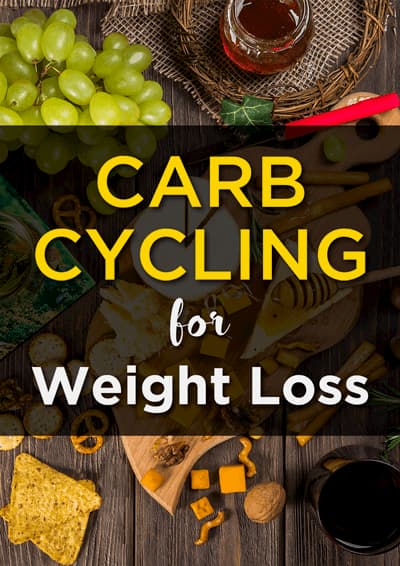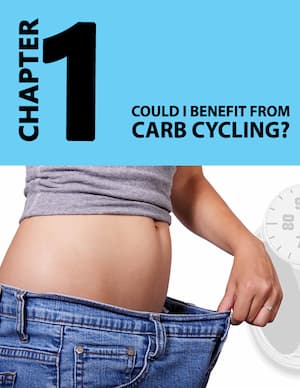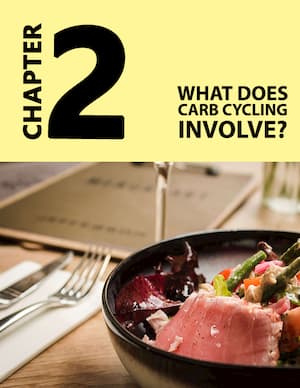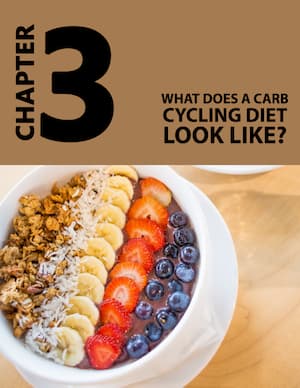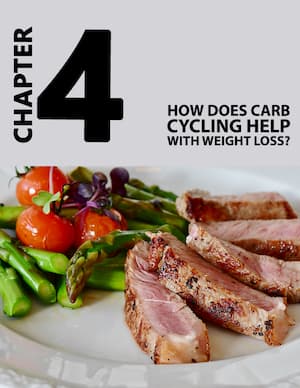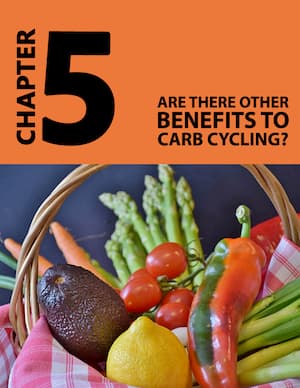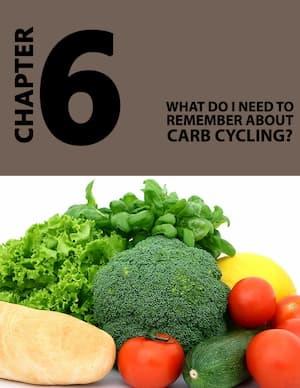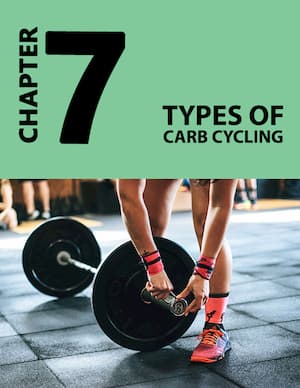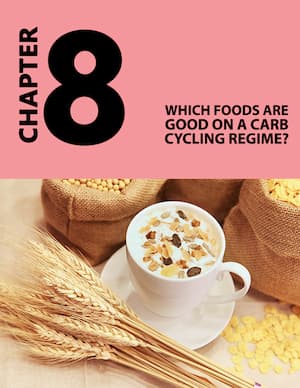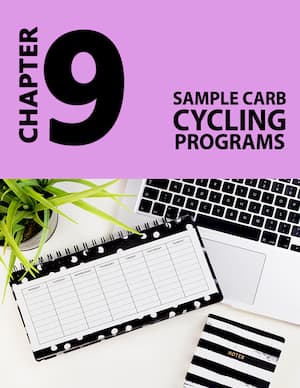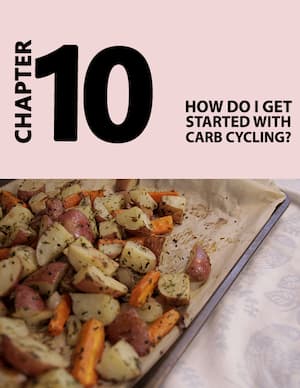As we’ve already pointed out, there are many kinds of carb cycling program. This makes it hard to decide how you’re going to go about getting started. If you’re ready to put a carb cycling plan of your own in place, here are some sample regimes. They will help you to decide which work best for you.
Two of the most popular programs are:
The High/Low Program
The High/Medium/Low Program
Let’s look at the High/Low Program first.
This method involves having a high carbohydrate day then a low carb day. A high carbohydrate day involves eating more than 150 grams of carbs. A low carbohydrate day involves eating under 100 grams of carbs. The exact measurements and requirements will vary to suit each dieter. However, let’s imagine we’re planning a program for a 29-year-old male. Imagine he weighs 190 pounds and is 5 feet 8 inches tall. The total number of calories he needs to maintain weight is 190 x 15 i.e. 2850. He also weight trains three days a week. We’re going to look at a few programs to suit his statistics to meet different goals.
Firstly, let’s look at a suitable program for him if he wanted to lose fat.
With this goal in mind, he would need three days of high carbohydrates. These would be at the level of calories required for maintenance. He would then follow this by four days of low carb eating. These four days would all be 600 calories below this maintenance figure. He would choose his three weight training days as his high carbohydrate days. His non-workout days would be his low carbohydrate days.
His program would, therefore, look something like this:
Training day intake – 2850 calories
Protein intake – 190 grams
Carbohydrate intake – 375 grams
Fat intake – 65 grams
Rest day intake – 2250 calories
Protein intake – 190 grams
Carbohydrate intake – 100 grams
Fat intake – 120 grams
His total deficit of calories every week would be 600 x 4 i.e. 2400 calories. This would help him to lose just under 1 pound of fat every week. While this may not sound impressive, it’s important to remember that rapid fat loss isn’t the only goal. The more quickly fat is lost, the greater the chance of losing muscle too. This is the opposite of the aim of carb cycling.
What about if the same individual wanted to try carb cycling to gain muscle?
In this case, his calorie intake needs to be adjusted slightly. He needs a surplus of calories in this instance. This will help him to recover after working out. It’ll also promote more muscle tissue growth. His goal is to have a surplus of 300 calories on his training days. On his low carb days, he’ll stay at his recommended maintenance intake. His program would, therefore, look like this:
Training day intake – 3150 calories
Protein intake – 190 grams
Carbohydrate intake – 440 grams
Fat intake – 70 grams
Rest day intake – 2850 calories
Protein intake – 190 grams
Carbohydrate intake – 300 grams
Fat intake – 100 grams
You’ll probably notice that the carb intake on a low carb day is surprisingly high. Earlier, we said the carb intake on a low carb day should be under 100 grams. Yet in this case, the individual has a high energy expenditure. Therefore, avoiding excess fat is important. Fat can be stored easily when there’s a caloric surplus. Therefore, avoiding eating too much fat is important to prevent fat gain. Meanwhile, carbs are essential to refill muscle glycogen and promote recovery. This aids in training performance.
With this program, the individual is cycling carbs, however not so drastically as he would to lose weight.
Some people find keeping carb intake to under 100g on their low carb days helps them to stay leaner. However, caloric intake must be kept at the same level overall, even on off days. This will ensure a net caloric surplus is maintained over the entire week.
What about the high/medium/low method?
Well, this involves having a high carbohydrate day then a medium carbohydrate day. Finally, a low carbohydrate day will follow on. The cycle will then repeat. A high carbohydrate day involves eating over 150 grams of carbs. A medium carbohydrate day involves eating between 100 grams and 150 grams of carbs. A low carbohydrate day involves eating under 50 grams of carbs.
Now, let’s imagine our dieter. She’s a 31-year-old woman who is 5 feet 5 inches tall. She weighs 150 pounds and works out three days per week doing weight training. Her total calories for maintenance are 150 x 15 (2250).
If she wants to lose fat, this is a sample carb cycling plan for her.
She should have two days of high carb intake. The calorie intake will be set at her maintenance level of 2250 calories. On her two medium carb days, her caloric intake will be 300 calories under this level. On her two low carb days, her caloric intake will be 600 calories under her maintenance level. Rather than aligning the high carbohydrate days with her training days, the intake is: staggered. Training should be carried out on medium and high carb days though, not low carb days.
Her program will, therefore, look like this:
High carb day intake – 2250 calories
Protein intake – 150 grams
Carbohydrate intake – 245 grams
Fat intake – 75 grams
Medium carb day intake – 1950 calories
Protein intake – 150 grams
Carbohydrate intake – 150 grams
Fat intake – 80 grams
Low carb day intake – 1650 calories
Protein intake – 150 grams
Carbohydrate intake – 50 grams
Fat intake – 95 grams
Over the week, the plan could look like this:
Monday – training day – high carb
Tuesday – training day – medium carb
Wednesday – rest day – low carb
Thursday – training day – high carb
Friday – rest day – medium carb
Saturday – rest day – low carb
Sunday – rest day – low carb
If the same individual wanted to gain muscle through carb cycling, the plan would look different. A caloric surplus will be necessary so muscle tissue can grow and recover. Therefore, a 200-calorie surplus will be required on a training day. On rest days, she should eat the number of calories required for maintenance.
Her program will, therefore, look like this:
High carb day intake – 2450 calories
Protein intake – 150 grams
Carbohydrate intake – 340 grams
Fat intake – 55 grams
Medium carb day intake – 2450 calories
Protein intake – 150 grams
Carbohydrate intake – 240 grams
Fat intake – 100 grams
Low carb day intake – 2250 calories
Protein intake – 150 grams
Carbohydrate intake – 150 grams
Fat intake – 115 grams
You may have noticed the medium carb day requirement is higher than suggested earlier. The same reasons apply in this case as applied in the above example. Eating excessive dietary fat in such circumstances can lead to the storage of fat. Therefore, avoiding eating too much fat helps to prevent fat gain. Carbs are vital in recovery and in refilling the muscle glycogen. This helps to boost training performance.
The individual in question here is still carb cycling. However, her plan isn’t as drastic as it would be if she wanted to lose fat. If you use this method to gain muscle mass, you can adjust the carb and fat numbers to suit you.
Some people find if they keep their carbohydrates to under 100g on rest days, they stay leaner. This may work for you, but you’ll still need your caloric intake to remain at the maintenance level even on rest days. This will ensure you’re in a caloric surplus overall during the week.
The key nutrient for maintaining and gaining muscle is protein. Nevertheless, it doesn’t have to be exceptionally high, whether you want to gain muscle or reduce fat. 1g of protein for each pound of your bodyweight is ideal. Fat and carb totals are important too. However, they can be tailored to your energy expenditure and preferences.
How about if you want to maintain your bodyweight? You can still achieve this goal with carb cycling. You simply need to choose one of the above methods. You then adjust your rest day and training day intakes, so they balance out over the week. One way of doing this is to consume 200 calories more than your recommended maintenance level on a training day. On a rest day, you should have 200 calories under this figure. So, if your maintenance intake is 2500 calories, you’d have 2700 on training days and 2300 on a rest day.

